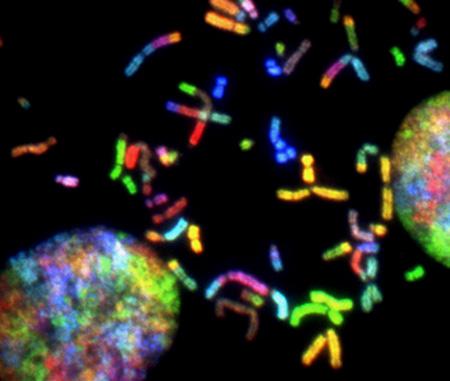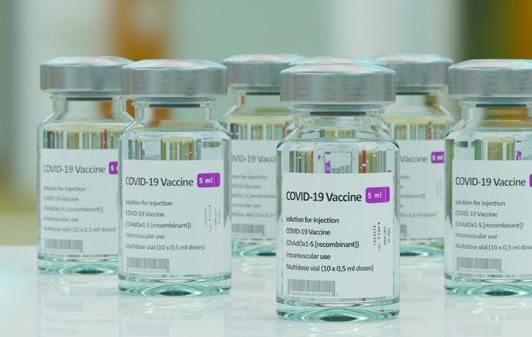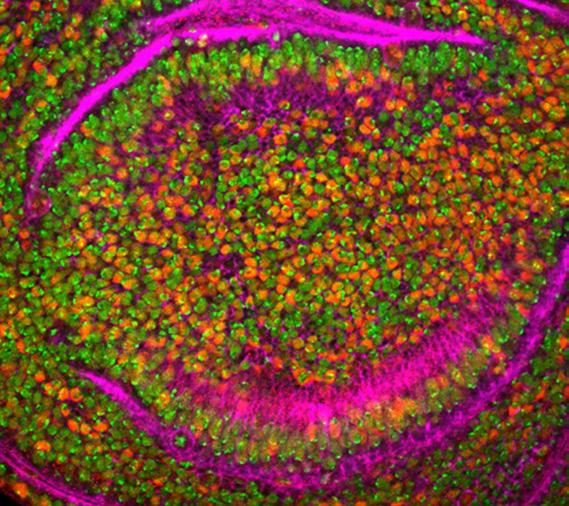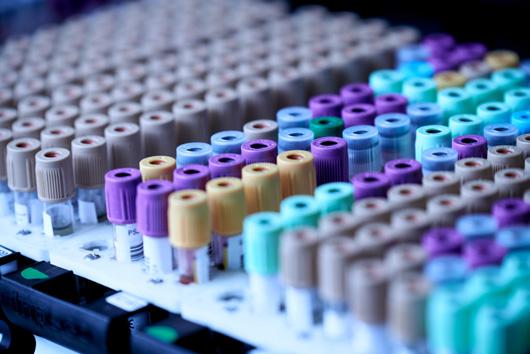
21 minute read
IUPAC Top Ten Emerging Technologies in Chemistry 2021
Breakthroughs for a circular, climateneutral future
by Fernando Gomollón-Bel
IUPAC thrives to boost the impact of chemistry around the world. Recently, it established a new initiative—the Top Ten Emerging Technologies in Chemistry—to showcase the tremendous importance of the chemical sciences by highlighting developments on the verge of becoming game-changing commercial breakthroughs [1]. Some have been truly transformational for our society, such as RNA vaccines and rapid tests, both key technologies to enable a smooth transition to the new normal after the COVID-19 pandemic. This year, the Top Ten efforts continue—featuring a brand-new logo and further actions to disseminate and promote the project beyond this publication. The new selection of emerging technologies gathers both well-established, high-technology readiness level (TRL) applications and ground-breaking opportunities for the chemical industry. Of course, many of them still address the ongoing coronavirus crisis, focusing on new pharmaceutical solutions to prevent the spread of pathogens like SARS-CoV-2. Moreover, many tackle the climate crisis and provide new roadmaps to achieve the United Nations’ Sustainable Development Goals (SDGs) [2]. The consequences of global warming are here—heatwaves, floods, and wildfires devastate our planet constantly. Chemistry will provide pivotal tools towards a sustainable future [3], many included in this singular selection. IUPAC experts have selected the Top Ten Emerging Technologies in Chemistry 2021— ten ideas to catalyse industrial innovations and transform our world.

Blockchain technology
Digital advances for more reproducible, traceable chemical innovation
Solvay, Evonik, and BASF are some of the world-leading companies that are exploring the uses of blockchain technology in chemistry. Furthermore, many believe that blockchain holds the key to more reproducible science thanks to one of its main built-in features—traceability. Back in 2008, Satoshi Nakamoto conceptualised and designed blockchain—although many other computer scientists had played with similar ideas in the 1980s and 90s. Nakamoto designed the beloved cryptocurrency Bitcoin, a list of digital financial records and monetary transactions linked with encrypted algorithms and managed by a distributed peer-to-peer network of users. Ever since, experts have adapted this technology to develop other applications such as smart contracts, digital stocks, and proofs of authenticity valued in the Arts. By design, blockchains offer an immutable repository to record any kind of transaction, offering great potential all along the scientific process. Since the original record of transactions is safely kept throughout a network of computers under strict cryptographic protection, fraudulent alterations are quickly detected. The U.S. National Institute of Standards and Technology, among other prestigious institutions, believes blockchain could benefit scientists across all fields, as well as solve serious problems such as reproducibility [4]. For instance, chemists in the UK have explored the uses of blockchain to trace a series of simple computational calculations. Their preliminary results suggest that this type of encrypted environment could increase both transparency and accessibility, as every single step of the process is documented and shared within the digital ledger [5]. German researcher Sönke Bartling believes that blockchain can benefit research beyond secure laboratory notebooks and data-collection—enhancing publications, grants, evaluation, and recognition. Indeed, the World Intellectual Property Organization is exploring the potential of blockchain to transform the industry of Intellectual Property (IP)—from evidence of creatorship to the management of royalties [6]. Chemical companies want to stay ahead; many have already created blockchain-based systems to modernise their supply chain. This technology guarantees secure transactions across all parties, boosting traceability to unprecedented levels of detail. “Smart contracts” are fully automated, enabling a continuous tracking of chemical goods from raw materials to the market shelves. European chemical manufacturers also explore the possibilities of blockchain to advance the circular economy—with easier, more reliable life cycle assessment, blockchain will likely increase recyclability, improve the utilisation of resources, and eventually reduce overall costs [7]. Another proof of the possibilities of blockchain in chemistry is the proliferation of start-ups such as ChemChain, supported by the European Commission through different funding programmes. This company ensures that data and information on chemicals is fully-protected through their decentralised, encrypted ledgers, which has attracted leading industries such as Dow-Dupont. It is expected that Blockchain will generate a business value of over $3 trillion by 2030 [8], and its applications in chemistry will certainly represent a large share of it.
Semi-synthetic life
New letters to expand biochemistry and therapeutics
Alchemists dreamt of transforming lead into gold. Nowadays, chemists fantasise with expanding the code of life—a universal system to conceal biological information. In the past few years, this field has become a reality and has already achieved some remarkable milestones. After decades of failed attempts, a team of researchers at Scripps finally succeeded in 2014 in adding two artificial letters to the genetic alphabet—nicknamed X and Y [9]. Since then, scientists have further expanded the alphabet with new bases like B, P, S, and Z [10]. All of these synthetic nucleotides could populate our genomes with new words, new ideas—such as the information needed to create life-saving proteins for diagnostics, treatments, and more. Ultimately, chemists also designed novel biological systems that interpret and exploit these unnatural letters. Genetically-engineered strains of Escherichia coli carry these artificial nucleotide bases in their DNA and transcribe the information they encode into unusual proteins, which also feature non-traditional amino acids such as pyrrolysine and azydo-phenylalanine [11]. Nowadays, chemists study how to perfect these artificial biochemical machinery, developing new systems to minimise the number of transcription and translation errors, which benefit from the swift advances of technologies such as Nobel-winning CRISPR/Cas9. The implications of these discoveries transcend chemistry—life works with building blocks beyond the ones we bare, sparking new thoughts on what extra-terrestrial life could look like. Aside philosophical questions, unnatural nucleotides and amino acids provide new chemical tools for the design of targeted treatments, including THOR-707, an agent against metastatic solid tumours currently undergoing clinical trials. One of the companies spearheading this technology is Synthorx, established by synthetic life pioneer Floyd Romesberg. It was acquired by French pharma giant Sanofi in late 2019 for $2.5 billion— showcasing the commercial interest in this emerging technology. In the future, chemists may discover other artificial DNA letters, as well as synthesise novel unnatural amino acids, expanding the limitations of life as we know it and enabling a whole new range of better therapies and medical solutions.

Superwettability
A centuries-old discovery offers new opportunities
British scientist Thomas Young is mostly known for the double-slit experiment, which supported that light is a wave. However, he pioneered other important fields of science, including the study of wettability— the ability of liquids to maintain contact with a solid surface. In 1805, Young proposed the first definition for this concept, based on the contact angle liquid droplets form in the interface. Therefore, something really wetting will adopt rather flat shapes and small angles, whereas non-wetting liquids create almost spherical structures, at angles parallel to the surface [12]. After centuries of studying this phenomenon, scientists acquired a better understanding and even learnt how to tweak wettability at will—designing new materials with exceptional properties. Among these, superwettability emerged as a great promise with applications in energy, health, agriculture, and much more. Some of these advances are heavily inspired by natural micro- and nanostructures, such as the feet of geckos and frogs, the eyes of mosquitoes, and the surfaces of cacti and roses. Based on many of these examples, scientists have created nanostructured surfaces on metals, polymers, fabrics, and more. Chemistry is, of course, fundamental to these designs, which require carefully controlled manufacturing techniques. Furthermore, superwettable structures have led to surprising reactivities. Such surfaces exhibit unique fluid dynamics, which enhances the efficiency of chemical reactions where interface interactions are key—particularly photo- and electrocatalytic transformations. Examples include high-performance water splitting, epoxidation, esterification, and condensation. Moreover, this type of nanostructured catalyst usually exhibits enhanced durability, recyclability, and selectivity, paving the way to greener, more efficient chemical processes aligned with the United Nation’s Sustainable Development Goals (SDGs) 12 and 13 [13]. The uses of superwettable surfaces beyond chemistry include sensors, printers, energy-storage devices, pollution removal, water harvesting, and others. Several Chinese and Korean companies are exploring its potential in different fields, such as self-cleaning textiles, oil separation, and cooling. Many challenges in fabrication remain, however researchers are confident that this technology will revolutionise materials science. New opportunities keep arising [14].
Artificial humic matter
Engineering carbon-negative solutions for sustainable and efficient agriculture

Agriculture, livestock, and land use account for almost one-third of all greenhouse emissions. Beyond contributing to the concerning climate crisis, these affect crop yields directly—and reports from the Intergovernmental Panel on Climate Change (IPCC) predict that we will reach a critical situation in 2030. Once again, chemistry could convey a hopeful answer, an artificial alternative to humic matter for a better management of the scarce resources in our soils. Although hidden underneath us, the decomposition of organic matter into humic matter is the second largest process in the carbon cycle, after photosynthesis. Thus, designing strategies to make it more efficient is currently a priority. Furthermore, artificial humification processes ensure a complete control throughout the reaction, which leads to cleaner, safer, and greener fertilisation solutions. Currently, several approaches exist to accelerate the decomposition of organic matter— and hydrothermal humification is emerging as one of the most attractive among them. Envisioned by Fan Yang and Markus Antonietti, this technology ‘cooks’ organic matter in hot water in the presence of basic ashes. The specific conditions of these processes mimic natural geochemical processes and yield a product mixture comparable to natural humic residues [15]. Recent lab experiments suggest that these artificial humic matter improve soil quality and health, as well as agricultural productivity—an attractive alternative to offset the negative effects of climate change. This enhancement comes from the many benefits of artificial humic matter. Research shows it improves water and fertiliser binding—hence improving the utilisation of resources and reducing side-effects such as eutrophication—and stimulates soil microbiology, which benefits the absorption and digestion of minerals. Moreover, unlike natural biochemical decomposition processes that are unavoidably linked to the emission of greenhouse gases such as carbon dioxide and methane, artificial humic matter is essentially carbon negative [16]. Experts believe that these carbon fixation solutions will contribute to the circular economy, aligning with SDG 13 and leading to a carbon-neutral society. Currently, several institutes in Europe are working to develop the first pilot plants to prepare artificial humic matter in large scale. Together with other IUPAC Top Ten Emerging technologies, such as nanopesticides, nanosensors, and artificial intelligence, artificial humic matter will pave the way to more sustainable and efficient agricultural processes.
Chemical synthesis of RNA and DNA
The future of nucleic acids in medicinal chemistry after COVID vaccines
Last year, IUPAC highlighted the potential of RNA vaccines to put an end to COVID-19 and most likely to many other diseases in the future, including cancer, HIV, and influenza [17]. These vaccines are adaptable and versatile, as well as relatively quick to manufacture. By the end of July 2021, the U.S. had administered over 325 million doses of mRNA vaccines against SARS-CoV-2, according to Our World in Data. However, none of this would be possible without the breakthroughs in the chemical synthesis of nucleic acids. Now, after more than fifty years of technological developments, the manufacture of RNA and DNA is fully-automated and democratised—to the point that several “benchtop” synthetic devices are commercially available. Amidst the Top Ten selection, this is probably the most established in the market. It has successfully transitioned from basic laboratory reactions, with phosphoramidite chemistry at its core, to an innovation landmark of the past century. Nowadays, the synthesis of nucleic acids has advanced enough to yield results that verge on science fiction. In 2019, Chinese researchers reported a proof-of-concept synthesizer that used the same principles as a conventional inkjet printer. Using this technology, scientists printed different strands of DNA directly and precisely into silicon microreactors—devices with a myriad of applications in chemistry, biotechnology, and medicine [18]. Big IT companies, such as Microsoft and Western Digital, are currently exploring the possibilities of chemically-synthesised DNA for data storage—and the results are very promising. The latest results hint that nucleic acids pack information more durably and densely than conventional magnetic solutions, up to seventeen exabytes per gram, according to recent studies [19]. Beyond these technological advances, the automated chemical synthesis could lead to novel therapies with tremendous potential. As of 2020, the FDA had approved eleven drugs based on oligonucleotides—and several more are currently undergoing medical trials. Leading chemical and pharmaceutical companies—Biogen, Merck, Bausch & Lomb, among others—are studying this technology, which is becoming increasingly popular after the triumph of mRNA-based COVID vaccines. Targets include cancer, infectious diseases, diabetes, and more—all encompassed within SDG 3 [20]. Finally, these decades-old chemical developments yield promising results, proving anew that funding basic scientific research is paramount for progress [21].

Sonochemical coatings
Safer, more durable materials with value-added properties
Physical stimuli regulate IUPAC Top Ten Emerging Technologies such as mechanochemistry, liquid-gating, and high-pressure inorganic chemistry. Under unique conditions, chemicals often behave surprisingly—yielding previously unimagined properties and capabilities. Sonochemistry—the use of (ultra)sonic waves to trigger chemical reactions—stands out among these phenomena, particularly for its huge potential to manufacture innovative functional materials with value-added properties [22]. This year IUPAC highlights the potential of sonochemistry in surface coating, a technology that directly contributes to several SDGs. This type of treatment conveys all sorts of different properties to a given surface—magnetic, fluorescent, and antimicrobial, among others. The latter has proven especially important during the COVID-19 pandemic, as different surfaces in hospitals, public venues, and others with which we interact in our daily lives required effective antiviral properties to eliminate SARS-CoV-2 residues. Sonochemical coatings cover textiles with antibacterial nanoparticles of metals such as silver, copper, and zinc—all of which reduce the occurrence of hospital infections [23]. Furthermore, several studies show that antibacterial sonochemical coatings withstand many washing cycles without a decrease in performance— something key in real-life settings in which where garments constantly undergo professional cleaning at high temperatures. Sonovia, an Israeli start-up, uses zinc-nanoparticle sonochemical coatings on reusable masks that kill over 99% of bacteria, virus and fungi, according to their website. Moreover, certain coatings yield ‘smart’ materials. For example, Spanish researchers covered textiles in Prussian blue nanoparticles, which detect strains of pathogenic bacteria with a simple colour change; they expect that this development could prevent bacterial infections in crowded settings beyond hospitals [24]. Sonochemical coatings provide advantages in the fields of food safety and energy, too, covering strawberries with antibacterial compounds extends their shelf life and the coating of lithium-ion batteries provides high performance and stability. For these reasons, several companies are exploring new possibilities to scale-up this technology to an industrial setting and developing roll-to-roll methods that enable continuous production of coated materials. The European Commission also funded the SONO project with more than €8 million to attain this goal [25]. As an emerging technology, sonochemical coatings now ought to survive the “valley of death” and successfully bridge the gap with industry.
Chemiluminescence for biological use
Water-soluble dioxetanes improve the speed and sensitivity of biological tests
Luminescence has always fascinated humans. Admiring the green glow of fireflies and the blue shine of algae is just magical. Scientists have learned to harness the power of these chemical reactions – luminol helps crime scene investigators detect blood and the 2008 Nobel prize-winning green fluorescent protein (GFP) lights up biological samples, simplifying microscopy. Yet, scientists thrive to keep improving light-emitting molecules for applications in efficient diodes, safety signalling, biological studies, and more. Recently, researchers discovered highly-efficient chemiluminescent probes with great potential for applications in biology, biotechnology, and medicine. Based on dioxetanes—four-membered, saturated oxygen heterocycles—these molecules sparkle remarkably under physiological conditions, sometimes thousands of times brighter than previous solutions. Most importantly, dioxetanes perfectly perform their duty in water, unlike competitors that need organic solvents. This expedites analyses because chemiluminescent processes happen in vivo, like enzymatic solutions, with a comparable quantum yield [26]. This emerging technology is still in an early stage, yet many interesting applications have already arisen. Among other things, dioxetane probes show great promise detecting certain types of tumours, and even help differentiate between cancer subtypes. They also enable ultra-sensitive detection of pathogenic bacteria such as Salmonella and Listeria, linked to serious foodborne illnesses that cause serious problems even today. Furthermore, dioxetanes bring interesting opportunities to the field of live cell imaging, which could accelerate the understanding of fundamental biochemical processes, as well as provide novel sensitive diagnostic tools. Some molecules even exhibit emission in the near-infrared region, a wavelength with greater penetration than visible light—opening the door to both non-invasive diagnostics and localised treatments [27]. It is remarkable that Biosynth—a company that recently merged with Carbosynth—expressed interest in these novel dioxetane chemiluminescent compounds, and soon started commercialising them. In an official press release, Biosynth’s president stated that the potential of this technology is huge and likely to dramatically improve the speed of biotests [28]. Glowsticks also shine thanks to dioxetanes [29]. Perhaps water-soluble dioxetane probes will become equally popular.

Sustainable production of ammonia
Green alternatives to the Haber-Bosch process
The Haber-Bosch process for the synthesis of ammonia is one of the most successful chemical reactions of all time. It enables the transformation of atmospheric nitrogen—mostly inert, thanks to the second strongest chemical bond in a diatomic molecule—into ammonia, then nitrates and nitrites, which are used across industries to make fertilisers, plastics, fibres, refrigerants, and more. This single reaction catapulted the demographic boom of the 20th century and currently yields over 200 million metric tons of ammonia annually. However, all of this comes at high cost—the production of ammonia emits more carbon dioxide than any other industrial process, without considering all the subsequent transformation into different chemicals [30]. Of course, we need to change that—chemists need a sustainable alternative to make ammonia and remove the strong ties to fossil fuels and greenhouse emissions. To achieve this, they envision two complementary strategies. On one hand, they seek inspiration in Nature—particularly nitrogenases in bacteria and cyanobacteria, which reduce dinitrogen thanks to an iron and molybdenum cofactor. Recent studies only showcase the wisdom of evolution—few metals top the performance of the two that are naturally present in enzymes. Nevertheless, they also favour hydrogen evolution, an unwanted competing reaction, and only the rational design of catalysts will enhance the selectivity of the process towards nitrogen reduction. Some solutions include supporting catalysts onto layered materials or encapsulating them into zeolitic cages. On the other hand, chemists harness the power of electricity to break the triple nitrogen–nitrogen bond and, at the same time, harvest hydrogen atoms from water. If the energy used comes from renewable sources—wind, hydroelectric, solar—the process becomes doubly sustainable, since it avoids relying on hydrogen obtained from the reforming of fossil fuels. The main challenge here is reducing the electric potential needed, while maximising activity and selectivity. So far, current solutions are far from beating the appeal of Haber-Bosch, hence several companies and funding agencies are supporting research to make hydrogen production greener [31]. Moreover, ammonia technically ‘stores’ hydrogen, a green fuel that only yields water when burnt, and it could eventually become an alternative to fossil fuels on its own. Unlike hydrogen, ammonia is easily liquified under mild conditions, which will simplify storage and transportation. Australian researchers are optimistic, envisaging a successful ammonia economy by 2040. Before that, we will develop carbon capture technologies to diminish the impact of Haber-Bosch production, then move this process to renewable hydrogen sources. In the latest phase of their roadmap, ammonia will come exclusively from the electrochemical reduction of dinitrogen – eliminating carbon emissions throughout the process [32]. Although many fundamental studies are still ongoing, certain solutions for the manufacture of green ammonia have already reached high TRL, including private endeavours by Yara (Australia), Hiringa Energy (New Zealand), Topsoe (Denmark) and Iberdrola (Spain). Green fertilisers, plastics, and fuels will come alongside sustainable ammonia, contributing to SDGs across the board, from clean energy and efficient agriculture to sustainable cities and responsible production [33].

Targeted protein degradation
Harnessing our cells’ machinery to revolutionise pharma
As previously mentioned, chemists and biochemists often find inspiration in nature. Once again, this is exactly the case of targeted protein degradation (TPD), an innovative chemical tool with great therapeutic potential. The principle is rather simple: harnessing our own cells’ degradation pathways to eradicate problematic proteins. This technology has attracted multi-billion in investments, stimulated the creation of start-ups, and even started diverse clinical trials. The key to TPD are small molecules that trigger proteolysis, often known as PROTACs. Their structure is cleverly designed to hijack protein-degrading enzymes and link them to a specific target, which is then eliminated in lieu of the original victim [34]. The potential for medicinal chemistry is tremendous. Before TPD, our strategies to block proteins were mostly limited to inhibitors, which need a specific binding pocket. However, only one in four proteins showcase said functionality—here TPD offers a therapeutic advantage, triggering the elimination of harmful structures. In addition, tracking proteins directly avoids complicated alternatives to knock them out using genetic engineering or small nucleic acids, often instable in vivo [35]. Rationallydesigned PROTACs (as well as other molecules with similar effects) show great promise in the treatment of cancer. Arvinas, a Yale University pioneer spin-of, has entered clinical trials with drug candidates against breast and prostate cancer based on TPD-molecules, providing the first ever in-human data for this technology [36]. Other companies soon followed, including Cullgen, Kymera, Zexin, and Nurix. Big pharmaceutical industries such as Pfizer, Bayer, Novartis, and Amgen, among others, have also seen the potential of TPD and have invested significant amounts to further develop these new drugs. Beyond cancer, researchers explore the possibilities of TPD to treat illnesses related to protein accumulation, including neurodegenerative diseases such as Parkinson’s and Alzheimer’s. Preliminary studies show that PROTAC-mediated TPD is a good strategy to trigger the elimination of certain protein aggregations—among them pathogenic tau protein, linked to Alzheimer’s [37]. TPD expert Craig Crews, co-founder of Arvinas, predicts these results are just the beginning of a new revolution in the pharmaceutical industry. Indeed, a hopeful emerging technology.
Single-cell metabolomics
Analysing biomolecules, one cell at a time
Last year, the IUPAC Top Ten Emerging Technologies initiative recognised the potential of nanosensors in the detection of single molecules, often called “the ultimate sensitivity.” Indeed, the latest advances in chemistry have enabled analyses with unprecedented levels of precision. In this direction, this year’s search recognises the progress in single-cell metabolomics. The progress in imaging techniques and technologies such as mass spectrometry have provided new insights into individual cells. Thanks to the enhanced resolution and sensitivity of current mass spectrometers, chemists can analyse several metabolites simultaneously, getting detailed information about cellular pathways, biological mechanisms, as well as unique fingerprints of cells and samples. To optimise the outcome with smaller sample volumes, mass spectrometers extract the entire content of one cell at once. Both electrosprays and lasers offer great alternatives for ionisation. More detailed techniques even enable the analysis of specific cellular parts, using microextractions, capillary samplings, and advanced separations coupling chromatography and electrophoresis. The finest combinations not only provide information about the nature of metabolites, but also provide details on concentration and their special arrangement. The potential to unravel unknown biochemical mechanisms is extraordinary. Nowadays, researchers seek to improve detection limits, as well as develop digital tools. These will serve many purposes: from enriching databases to accelerating the recognition of metabolites to enhancing algorithms to distinguish noise and artifacts from actual biological variability [38]. In the context of the coronavirus pandemic—and future outbreaks—single cell metabolomics will demonstrate their vast possibilities. Several studies harness their power to better understand infection processes and the interactions between the invading virus and our cells [39]. For some experts, the field is still young and full of complex challenges ahead. However, scientists progressively solve these challenges and further validate this emerging technology, which could bring sound answers to fundamental biochemical secrets [40].

A bright future ahead
Chemistry to tackle prominent societal challenges Acknowledgements
The IUPAC Top Ten Emerging Technologies in Chemistry initiative is utterly beautiful. Year after year, it highlights the most exciting developments in a wide variety of fields, from blossoming discoveries to established techniques already adopted by adventurous start-ups and audacious industries. Experts throughout the world suggest and select the collection—a family that now gathers 30 up-and-coming innovations with huge potential to transform our society. Several tackle environmental challenges, paving the way towards a sustainable world. Others envision novel systems to reduce, reuse, and recycle resources better, headed for a zero-waste, circular-economy. Finally, some of the Top Ten facilitate our transition to the new normal after the terrible coronavirus pandemic. Among these, many prepare us for forthcoming outbreaks and future pathogens—chemistry is crucial to avoid future health crises, key in fields from materials to pharmaceutical sciences. As we announce the 2021 Top Ten Emerging Technologies in Chemistry, we simultaneously begin our search for the 2022 candidates. Every chemist is kindly invited—indeed encouraged—to submit nominations, as IUPAC looks forward to further expanding and establishing this initiative. Please join us on our exciting journey.
Acknowledgements
This initiative is only possible thanks to the outstanding group of experts who identified and curated the list of technologies; they are: Michael Droescher (Chair), Jorge Alegre-Cebollada, Sophie Carenco, Javier García Martínez, Ehud Keinan, Rai Kookana, Greg Rusell, Ken Sakai, Natalia P. Tarasova, and Bernard West. Many thanks to Bonnie Lawlor, for all her valuable corrections and contributions that enhanced the quality of this article.
References
1. IUPAC (2019). “Top Ten Emerging Technologies in Chemistry”. https://iupac.org/what-we-do/top-ten/ Accessed on 19/07/2021.
2. United Nations (2015). “Sustainable Development Goals”. https://sdgs.un.org/goals
3. Matlin, S.A., et al. Nature Chem. 2015, 7, 941.
SEE Chemistry International for references list
Fernando Gomollón-Bel <fer@gomobel.com> is the Graphene Flagship Press Coordinator and a freelance science communicator based in Cambridge, UK. He is also a collaborator of the European Young Chemists’ Network, EuChemS.

The next search for the Top Ten Emerging Technologies in Chemistry is on . The deadline for nomination is 31 March 2022.
https://iupac.org/ what-we-do/top-ten/









